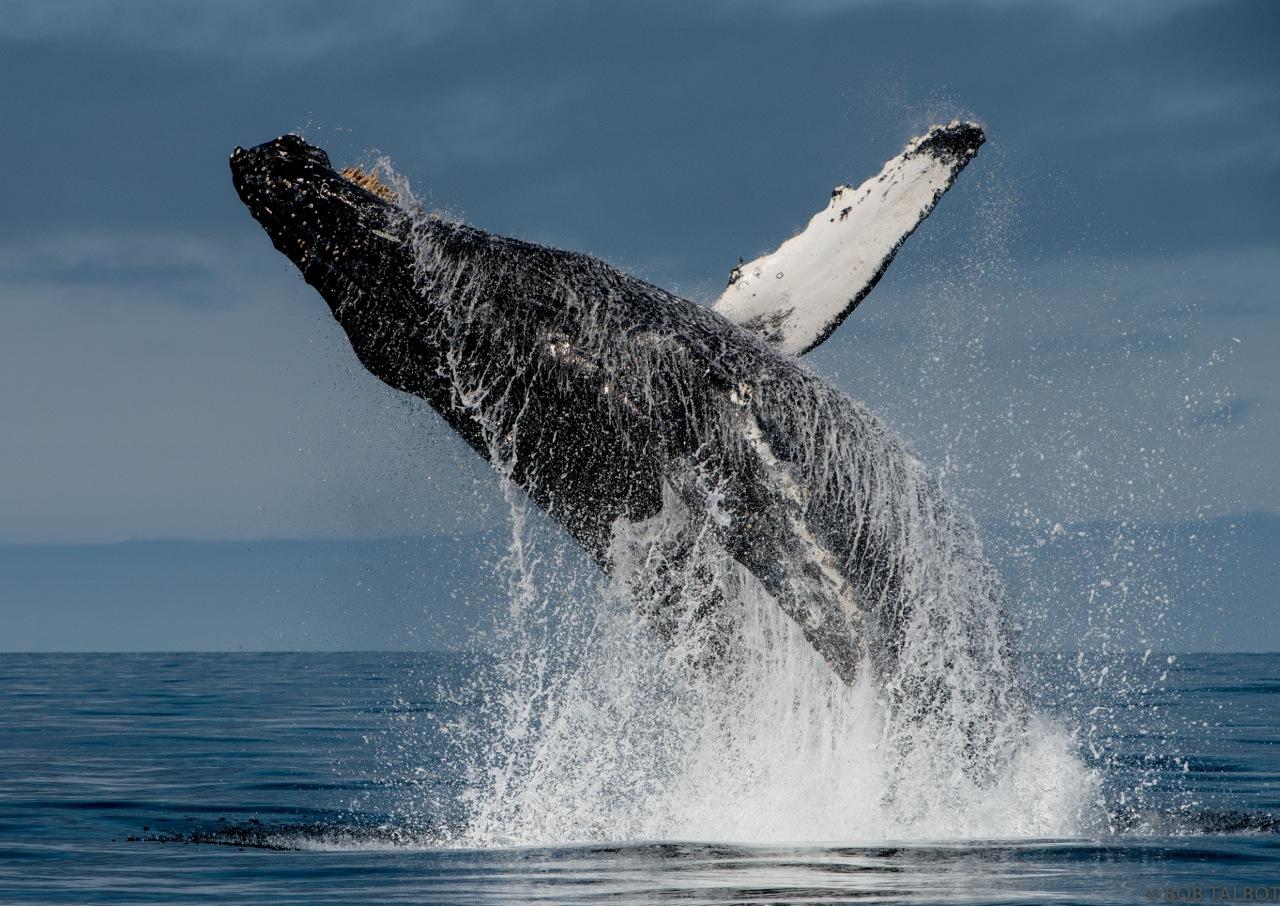
50 Years of Ocean & Coastal Conservation: Marine Mammal Protection Act

A humpback whale breaching in Monterey Bay National Marine Sanctuary. Photo credit: Bob Talbot
In 1972, the United States enacted a wave of landmark legislation to protect and sustain the ocean, coasts, and Great Lakes, including the amendments to the Clean Water Act, the Marine Mammal Protection Act, the Coastal Zone Management Act, and the Marine Protection, Research and Sanctuaries Act. These Acts fundamentally changed how the United States managed marine, Great Lakes, and coastal environments. Join us at Capitol Hill Ocean Week 2022 to learn more about the impact and legacy of each of these Acts and celebrate 50 years of ocean and coastal conservation!
When you think of your favorite ocean animal, there’s a good chance you might envision a marine mammal! Marine mammals like whales, dolphins, porpoises, seals, and sea lions are some of the most iconic creatures inhabiting our ocean and coasts, including many national marine sanctuaries. These species play a vital role in ocean ecosystems and are key indicators of the overall health of our waters.
In the late 1960s, many marine mammal species experienced significant population declines (due to human activities like commercial whaling, hunting, and bycatch from the fishing industry) and were headed on a dangerous path towards extinction. Increased public awareness of the intelligence and emotions of marine mammals due to new research sparked increasing alarm about animal welfare. In response to growing concern among the scientific community and the public about the decline of marine mammal populations due to human activities, the Marine Mammal Protection Act (MMPA) was enacted in 1972.
For the early 1970s, the MMPA was an innovative piece of legislation that shifted the focus of conservation from species to ecosystems and mandated an ecosystem-based approach to marine resource management. The MMPA established a national policy to prevent marine mammal populations from falling below sustainable levels and maintain the health and function of their natural habitats. Instead of previous management that aimed to produce a “maximum sustainable yield” to ensure an adequate harvest in the coming years, the MMPA established the concept of “optimum sustainable populations” to ensure healthy ecosystems. This required resource users to show that proposed “take” of marine mammals would not adversely affect the species or the ecosystem. “Take” as defined in the MMPA means harassing, feeding, hunting, capturing, collecting, or killing marine mammals in U.S. waters and by U.S. citizens on the high seas.
The National Oceanic and Atmospheric Administration (NOAA) authorizes some exceptions to the prohibition of “take” of marine mammals for scientific research, photography, display at a licensed aquarium or scientific institution, and stranding response and rescue. Coastal Alaska natives are also permitted to hunt whales, seals, and walruses for subsistence and to make and sell handicrafts. Co-management of marine mammals combines the field skills and traditional knowledge and wisdom of Indigenous communities with the scientific and technological expertise of government scientists. This benefits our understanding of marine mammals and continues the cultural and subsistence traditions of Indigenous communities.
Three federal agencies are responsible for the implementation of the Marine Mammal Protection Act. NOAA Fisheries is responsible for managing whales, dolphins, porpoises, seals, and sea lions. The U.S. Fish and Wildlife Service manages walruses, manatees, sea otters, and polar bears. Under the MMPA, Congress also established the Marine Mammal Commission to provide independent, science-based oversight of policies addressing human impacts on marine mammals and formalize a marine mammal health and stranding response program.
Over the past fifty years, the Marine Mammal Protection Act has made a difference for the survival and well-being of marine mammal species in U.S. waters. The MMPA signaled our nation’s commitment to the survival of marine mammals, and their importance to marine ecosystems, Indigenous culture, and coastal communities. The status of several marine mammal populations is markedly improved from 1972, with fewer species in at-risk categories and more of “least concern.” Large whales like the Pacific blue whale and Atlantic and Pacific humpback whales have begun to recover from centuries of whaling, benefiting from the shift to a now billion-dollar whale-watching tourism industry in places like Stellwagen Bank and Hawaiian Islands Humpback Whale National Marine Sanctuaries. Gray seals in New England, California sea lions, elephant seals, and harbor seals on the West Coast, and the Florida manatee, have all had a successful recovery.
While the Marine Mammal Protection Act has shown some success, there is still work to be done. Species like the North Atlantic right whale are still endangered and at risk of further decline. Climate change and ocean acidification pose a growing threat to marine mammal populations. Entanglement in marine debris and fishing gear, ship strikes, noise pollution, and habitat loss continue to affect marine mammal survival.
Marine mammal conservation is a key pillar of the National Marine Sanctuary Foundation’s mission to safeguard species and the places they call home. The Foundation supports critical research and conservation efforts, including hosting whale disentanglement trainings, working collaboratively with fishermen on gear innovations to reduce entanglement risk, and identifying whale use areas to reduce co-occurrence with the fishing industry and reduce mortality from ship strikes.
